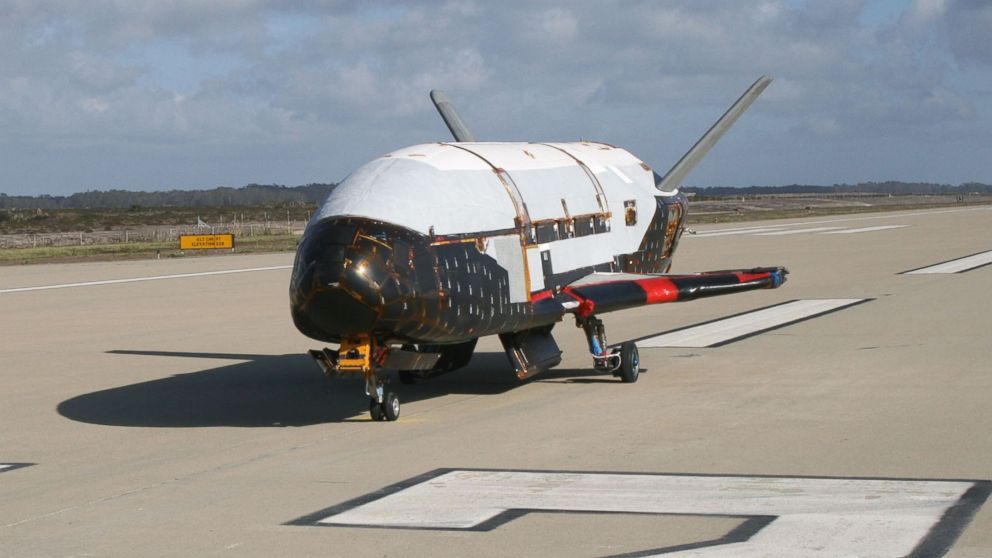Speculation Runs Wild Over Air Force's Mysterious X-37B Spacecraft
Air Force's X-37B returned this week after two years in space.

— -- After nearly two years in space, the small, mysterious spacecraft X-37B landed this week amid rampant speculation about just what it was doing in orbit.
Run by the Air Force, the X-37B has fascinated space enthusiasts since it first launched in 2010.
The ship looks like a miniature version of the recognizable NASA space shuttle. Only 29 feet long, it has a wingspan of just 15 feet, making it look practically miniscule next to the wingspan of a commercial jet.
The military has kept the mission of the X-37B classified, leaving spacecraft fans to run wild with their guesses.
Brian Weeden, a former Air Force officer who worked as an orbital analyst, said many space enthusiasts have been curious about the mission of the X-37B spacecraft and some have even attempted to track it in orbit.

Weeden, now a technical advisor for the Secure World Foundation, said speculation seemed to run rampant specifically because so little has been disclosed.
"Because it is a secret military space plane, there is tons and tons of speculation about what it's doing in orbit," Weeden said.
Popular online theories included that "it's testing the ability to drop bombs in orbit or covertly going up and disabling satellites," he said.
Weeden said looking at past instances of American spacecraft, he believes the spacecraft is more likely involved in something less shocking.
"What I think is more practical is that it's setting up technology for surveillance," said Weeden, who pointed out the military has relied heavily on satellite surveillance for decades.
Weeden also said the fact that the spacecraft can be reused and can return unmanned can allow faster turnaround on experiments.
Weeden said the ship might provide a kind of fast-track space for the military to try out new equipment in orbit before it is sent via satellite. If new equipment breaks on a satellite in orbit, it can be difficult to fix. However, if it breaks in on a returnable spacecraft, engineers can make changes before it returns to orbit.
The Air Force as an online page listing general areas of study for the spacecraft, including advanced guidance, navigation and control, thermal protection systems, and aircraft electronic systems, but has not released detailed information about these experiments.



